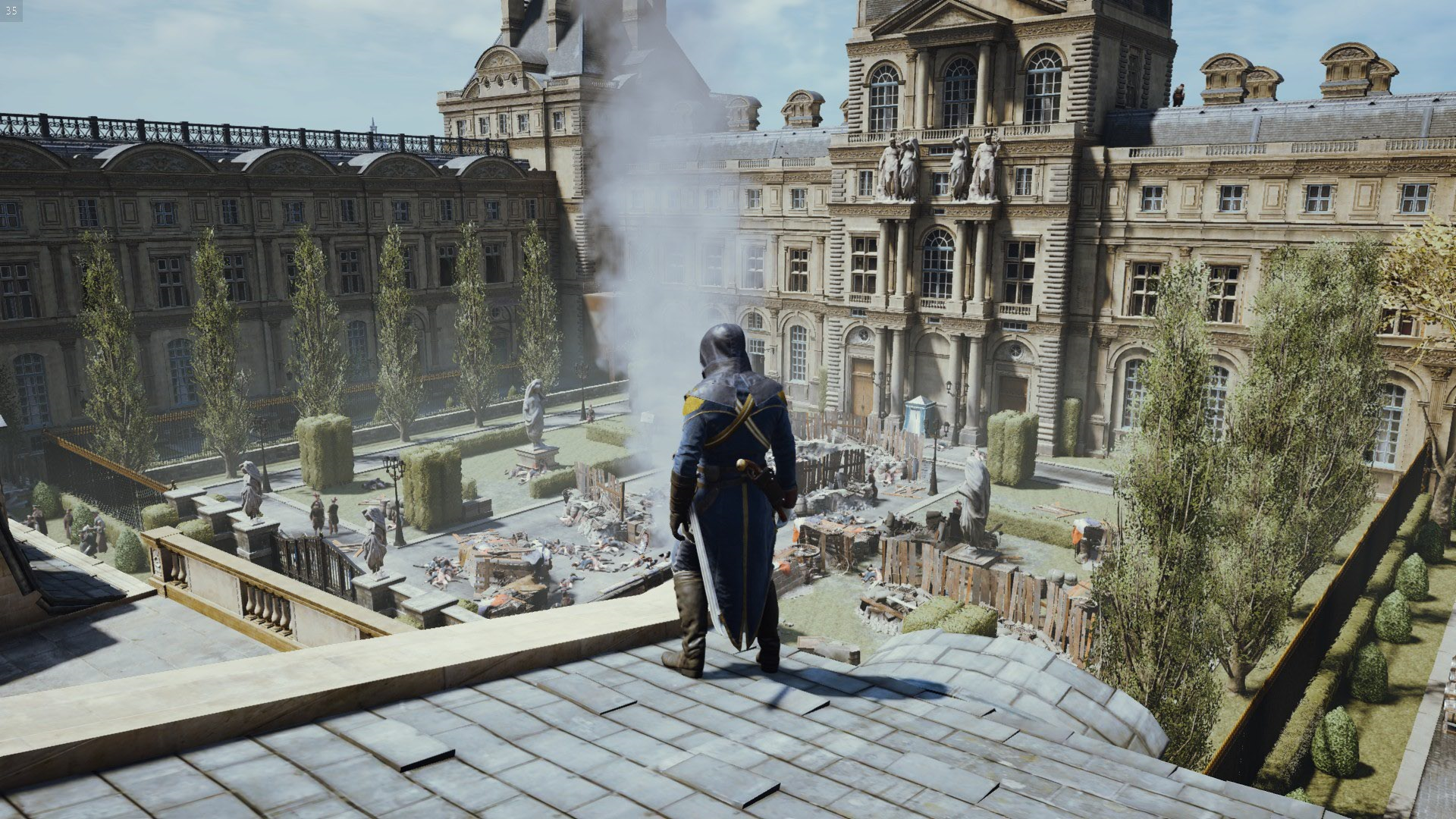What's the story of the Leaning Tower of Pisa? How did the tower that took two hundred years to build?
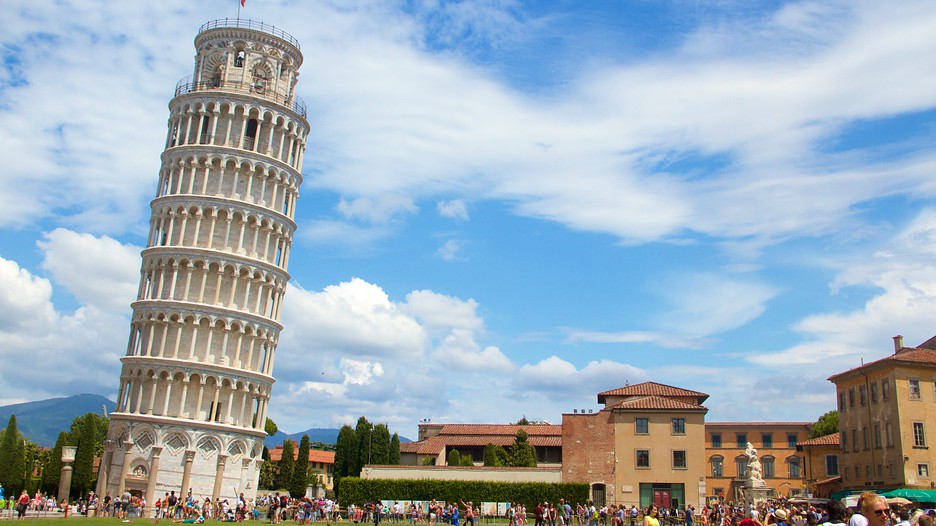
There is no doubt that no one knows the Tower of Pisa in Italy, as it is the most famous Italian flag, and Rome is one of the symbols of Italian architecture, to which the hat is raised. Year after year? Let's follow together this story that Al-Arabiya spoke about. The Italian city of Pisa played an important regional role, as the latter represented a major economic artery thanks to its containment of one of the most prominent ports and the influx of merchants to turn accordingly into a commercial exchange center on the Italian peninsula. .
In addition, Pisa represented a resting point for Christian pilgrims before heading to the holy sites in Palestine.
Thanks to the accumulation of wealth within it and the increase in its influence in the region, in the eleventh century, Pisa turned into one of the most important maritime republics, as the latter managed to control Corsica in 1077 and the Balearic Islands near Spain in 1113.
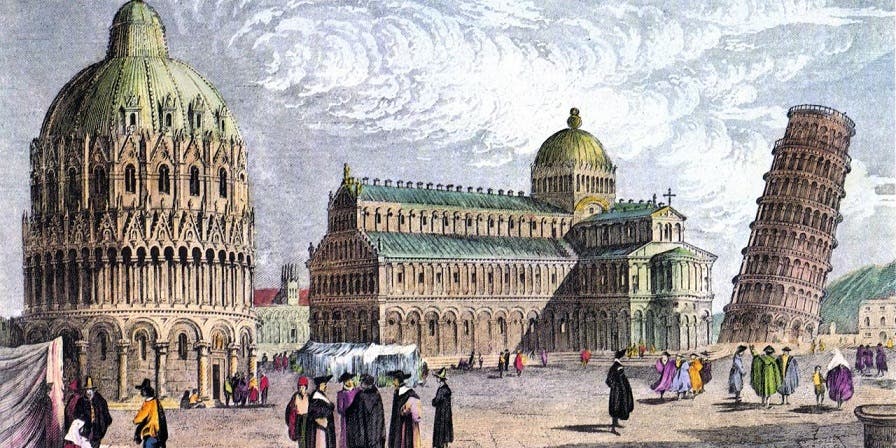 Oil painting dating back to the Renaissance period, featuring the Leaning Tower of Pisa
Oil painting dating back to the Renaissance period, featuring the Leaning Tower of Pisa
Around the year 1063, Pisa participated in the attack on the Palermo region in the midst of a military campaign aimed at expelling the Muslims from the island of Sicily. Simultaneously with the success of the military intervention, the Pisa armies returned to their homeland, laden with spoils. In addition, these forces brought with them some of the architectural designs that were present in Sicily, which were mainly represented in Byzantine architecture and Islamic architecture.
During its quest to perpetuate its military victory and the competition of the Republic of Venice, which tended to build St Mark's Basilica, the Republic of Pisa did not hesitate to work on building a complete religious complex at the Miracoli Square, which is also called Piazza dei Miracoli. ). Based on the proposed designs, this religious complex was to include a cathedral, a baptismal place, a cemetery, and a bell tower known later as the Leaning Tower of Pisa.
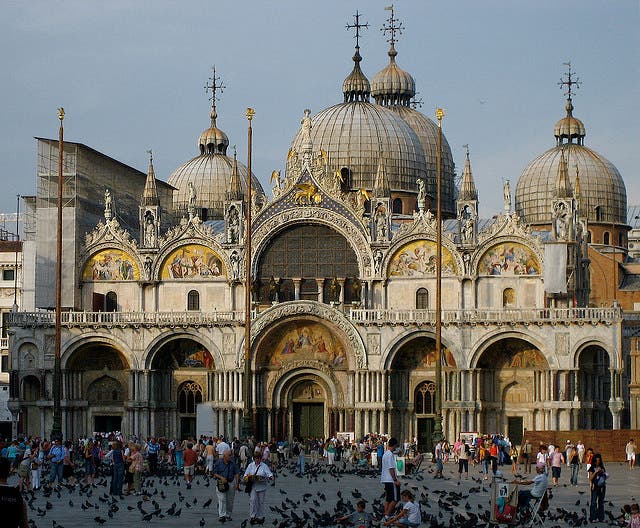 St Mark's Cathedral in Venice
St Mark's Cathedral in Venice
To this day, the name of the engineer responsible for building the Leaning Tower of Pisa remains a mystery.
On the one hand, some attribute his designs to the architect Diotisalvi, who lived during the twelfth century, and some talk about the role of the genius architect Gherardo din Gherardo. On the other hand, most historians assert that the first to lay the foundation stone for this historical landmark was not Except for the sculptor and architect Bonanno Pisano, who completed the first part of the construction, while Giovani di Simone undertook the task of starting the second part in 1275, and this came before Tommaso Pisano completed the rest of the tower in 1372 .
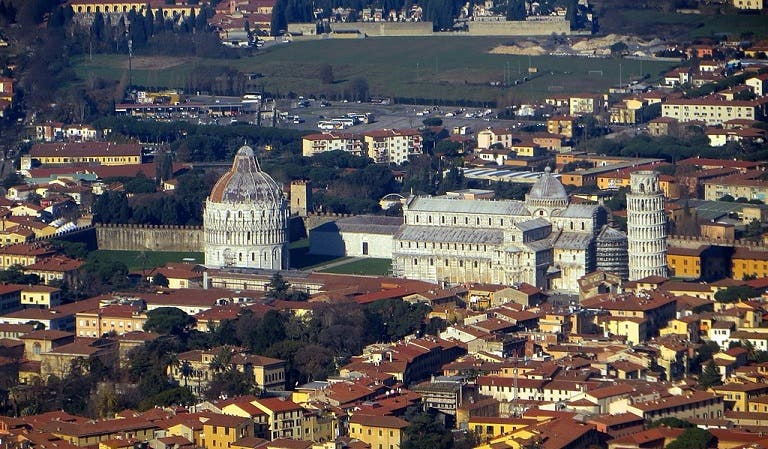
Work began on the Tower of Pisa, which exceeded 55 meters in length and consisted mainly of more than 14 thousand tons of white marble in the year 1173 and because of the presence of significant amounts of water under the ground of the area and the looseness of the soil, the sculptor and architect Bonanno Pisano forced to lay foundations and rules that did not exceed ten depths feet underground.
Simultaneously with the end of the works on the first floor, the Pisa tower began to tilt, as the southern part began to sink into the ground, mainly due to the wet floor and poor foundations. To overcome this crisis, workers building the Tower of Pisa made the columns of the southern part of the tower about 2,5 centimeters higher than those in the northern part.
 Sculptor and architect Bonanno Pisano
Sculptor and architect Bonanno Pisano
As construction work continued, the Tower of Pisa continued to sink into the ground from the southern side, and in the meantime, the engineers were forced, after completing work on the third floor, to adopt southern columns that were about 5 centimeters longer than their counterparts on the northern side.
With the advent of the year 1178, construction work on the Tower of Pisa stopped for about a century due to the continuous wars of the Republic of Pisa against Genoa and Florence (Florence). On columns taller than others in his quest for a sound upper floor dedicated to bells.
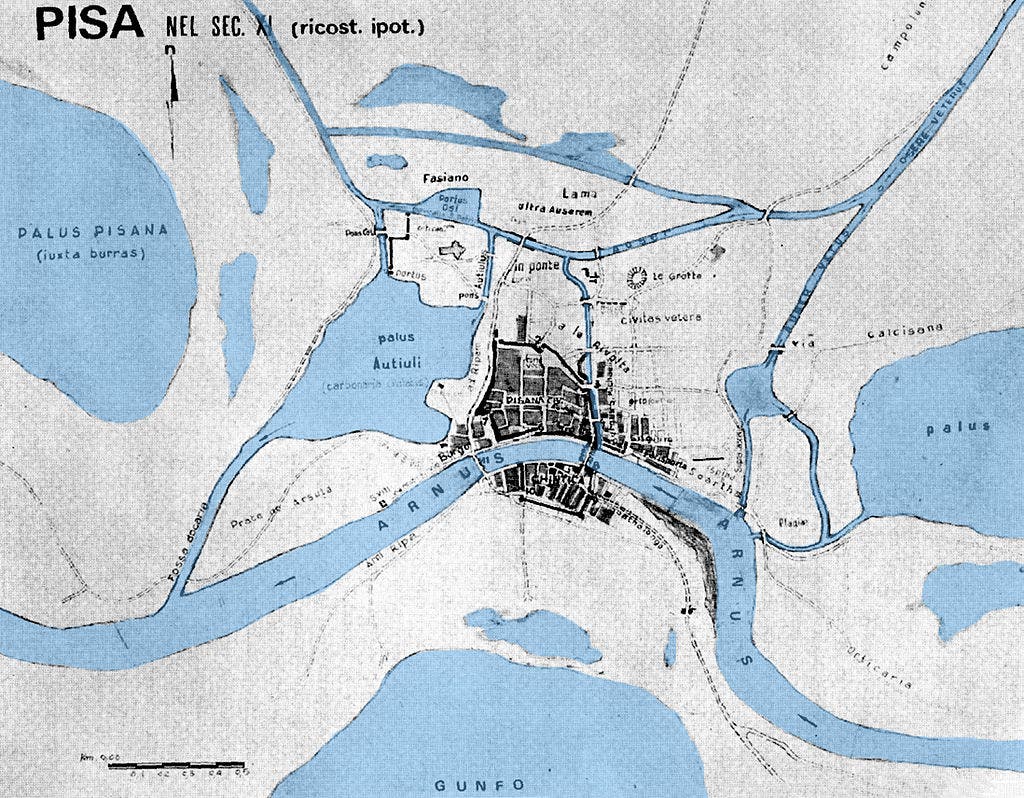 Map of the city of Pisa during the eleventh century
Map of the city of Pisa during the eleventh century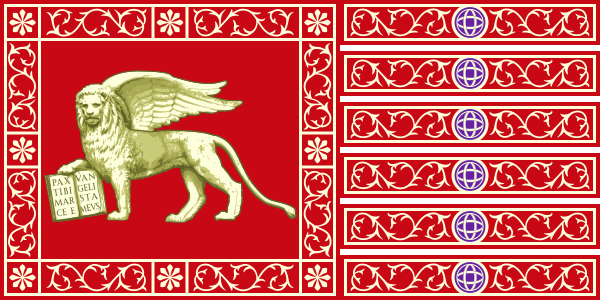 Flag of the Republic of Venice
Flag of the Republic of Venice
Around 1284, work on the Tower of Pisa stopped again, this time mainly due to the military defeat of the Republic of Pisa by the forces of Genoa during the Battle of Meloria, which marked the beginning of the decline of the Republic of Pisa on the regional scene.
Meanwhile, by the year 1372, it was officially announced that work had been completed on the Leaning Tower of Pisa, as the architect Tommaso Pisano finished work on the bell room, and because of the continuation of the tower’s tilt and sinking, the latter ordered the construction of a spiral staircase inside the tower. North. Accordingly, and due to the continuous wars of the Republic of Pisa and the engineering problems caused by the ground, it took nearly two centuries to build the Tower of Pisa, which became known as the Leaning Tower of Pisa.
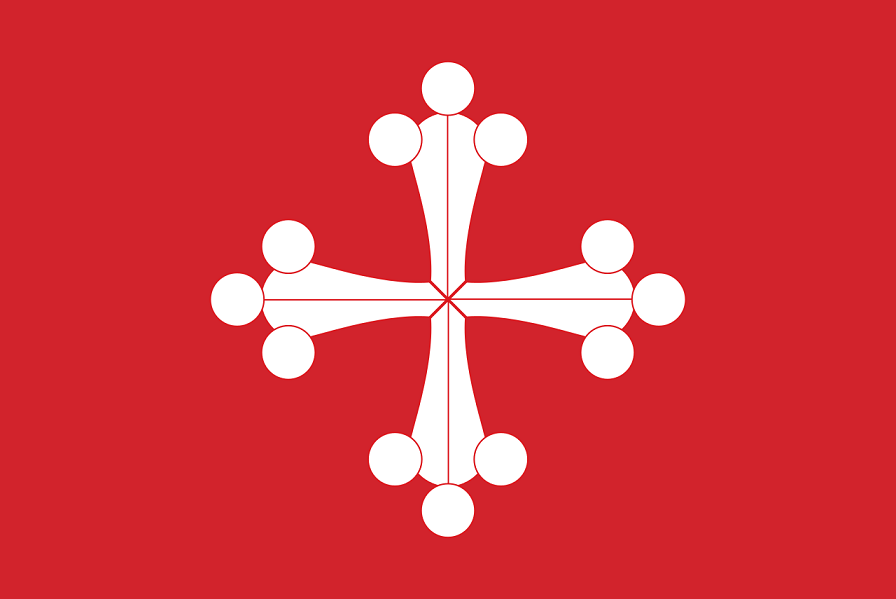 Picture of the flag of the Republic of Pisa
Picture of the flag of the Republic of Pisa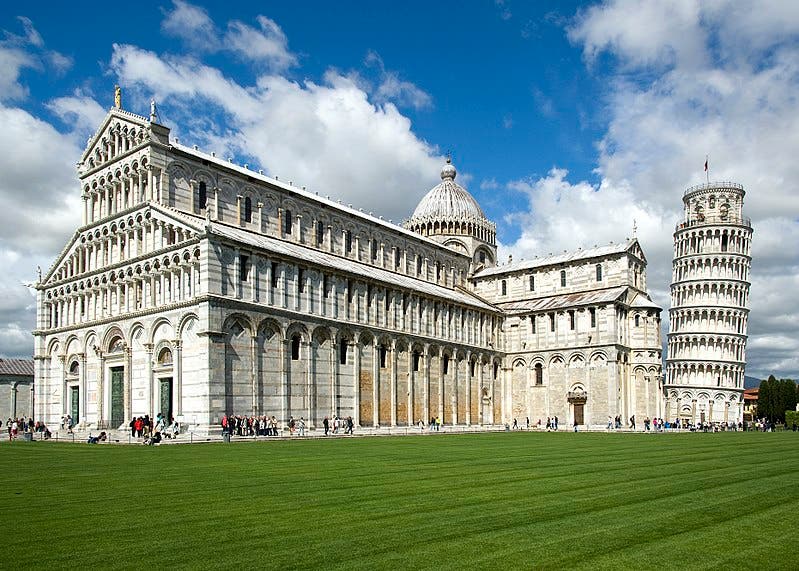 Picture of Pisa Cathedral with the Leaning Tower
Picture of Pisa Cathedral with the Leaning Tower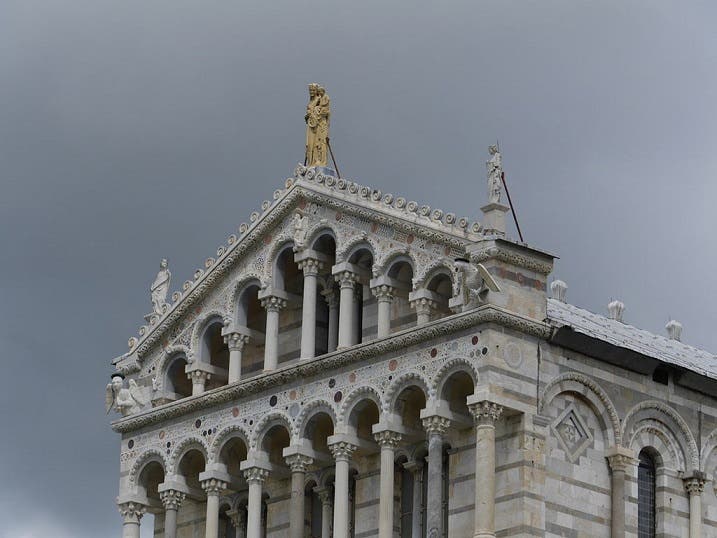 Picture of the main statue on the Pisa cathedral
Picture of the main statue on the Pisa cathedral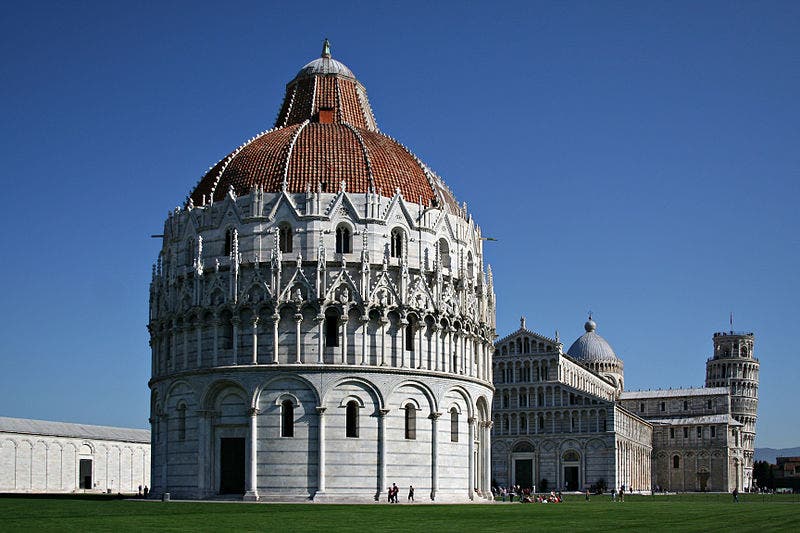 A picture of the baptism site in Wonderland
A picture of the baptism site in Wonderland
Meanwhile, the degree of inclination of the Tower of Pisa was previously estimated at 5.5 degrees, but after some repairs were made to it between 1990 and 2001, the degree of inclination became estimated at 3.99 degrees.



